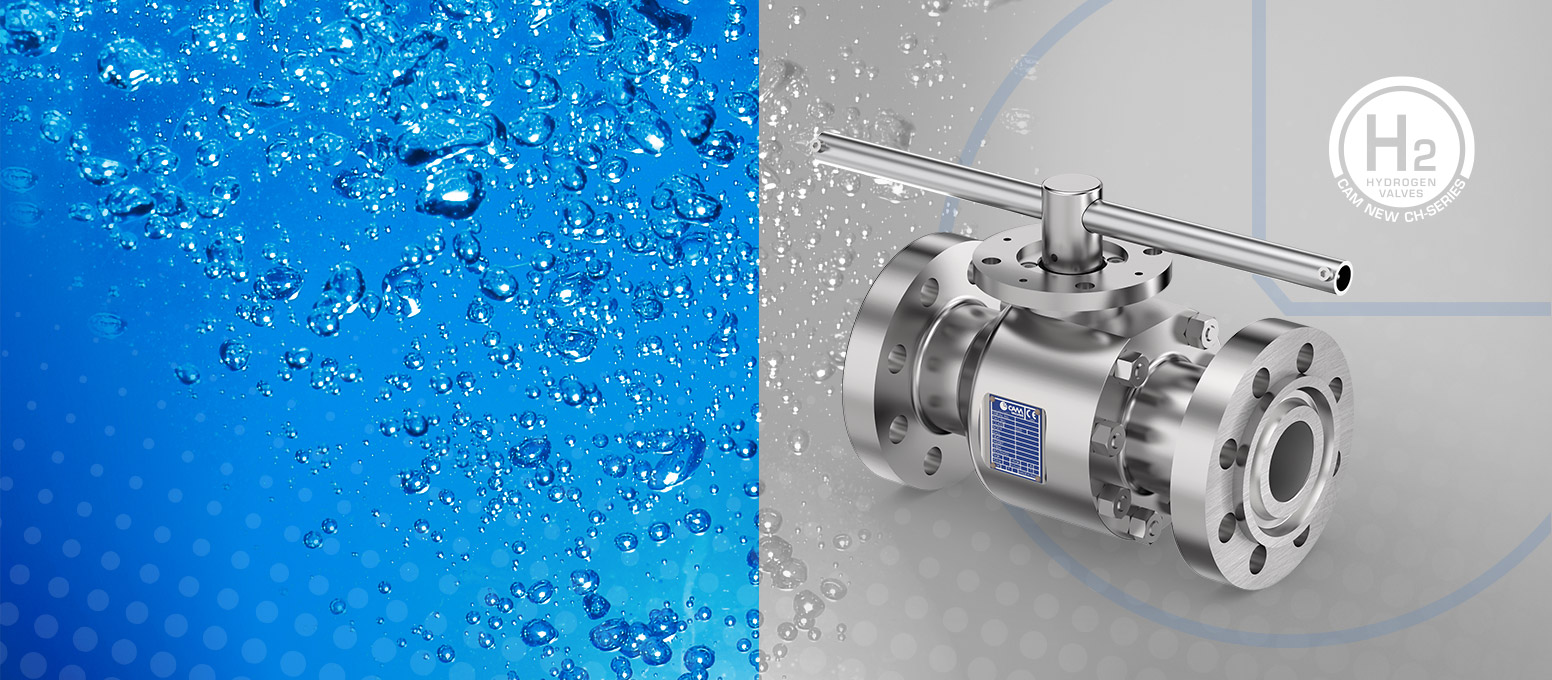
Hydrogen ball valves are critical components of hydrogen fuel storage, transportation, and distribution. These valves regulate the flow of hydrogen through pipelines, storage tanks, and fuel cells.
These valves are made of materials that are resistant to the various corrosive mechanisms of hydrogen at different service temperatures (from liquid hydrogen up to 500°C).
When choosing the seals for use in hydrogen applications, several factors must be considered, including material composition, hardness, compatibility with hydrogen gas, resistance to fire and fugitive emissions.
The seals material’s hardness is important, as it can affect the seal performance and resistance to extrusion. In general, harder seals materials (i.e., higher hardness are more resistant to extrusion and provide a better seal against high-pressure gas. However, softer seals materials (i.e., lower hardness may be more suitable for applications where the seals need to conform to irregular surfaces or where low sealing force is required.
Another important consideration is the compatibility of the seals material with hydrogen gas.
Hydrogen can cause embrittlement or cracking in some materials, particularly those that contain carbon or other organic compounds.
Therefore, it is essential to select seals materials that have been specifically tested and certified for use in hydrogen applications.
The design of the seals groove and installation method can also impact the performance and reliability of the seals. The groove should be designed to ensure proper compression of the seals and prevent twisting or rolling during installation. In order to improve seal effectiveness and avoid leakage, a lubricant or sealant may be required.
Hydrogen flash range is wide, its ignition energy is low and its energy density is double compared to methane. More over the flame of burning hydrogen is colourless. This means hydrogen fuelled fires can be very dangerous and demanding for a valve that shall be inherently fire safe.
Finally, shouldn’t be forgotten hydrogen is an indirect greenhouse gas two-hundred times more powerful than CO2. Hydrogen fugitive emissions are little investigated and their contribution to greenhouse effect is underestimated.
It is important to use valves with specific design that guarantees a low level of fugitive emissions.
The gas used for testing hydrogen ball valves should be carefully selected to ensure that it is safe, effective, and appropriate for the specific application and valve design.
For testing the pressure integrity and leakage of hydrogen ball valves, it is typically recommended to use a non-hydrogen gas such as air, nitrogen, or helium.
These gases are readily available, safe to handle, and do not pose the same safety risks as hydrogen. Additionally, using a non-hydrogen gas can help minimize the risk of embrittlement or cracking of valve components that can occur when exposed to hydrogen gas. However, for testing the compatibility of seals or other sealing materials with hydrogen gas, it may be necessary to use hydrogen gas for the test.
In this case, it is important to follow proper safety protocols and ensure that the testing is conducted in a controlled environment with appropriate safety equipment and procedures in place.
Ultimately, the selection of the gas used for testing hydrogen ball valves will depend on the specific testing requirements and objectives. It is important to consult with experts in the field and follow industry standards and regulations to ensure safe and effective testing of hydrogen ball valves.